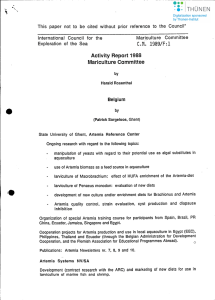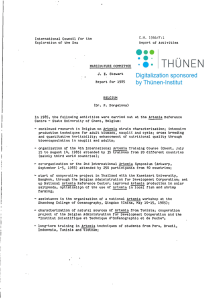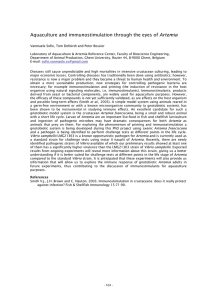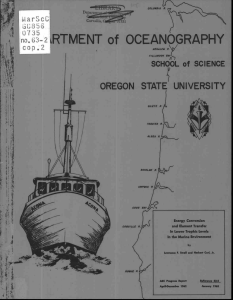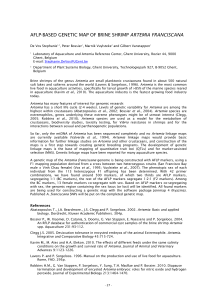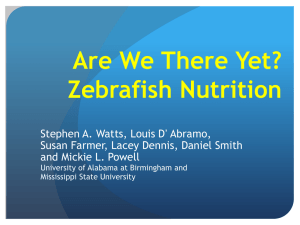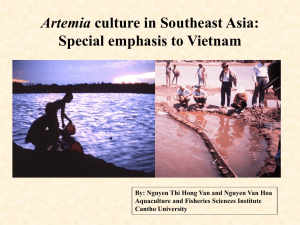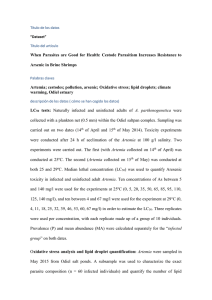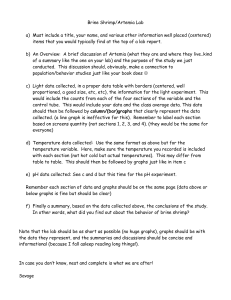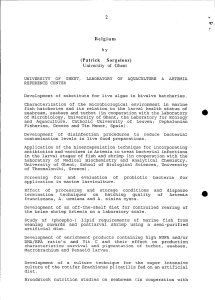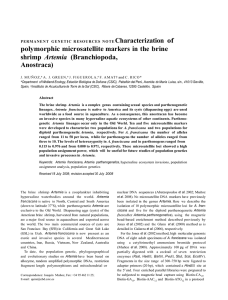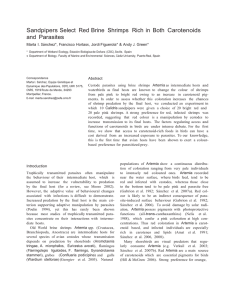Mariculture Committee Belgium
advertisement
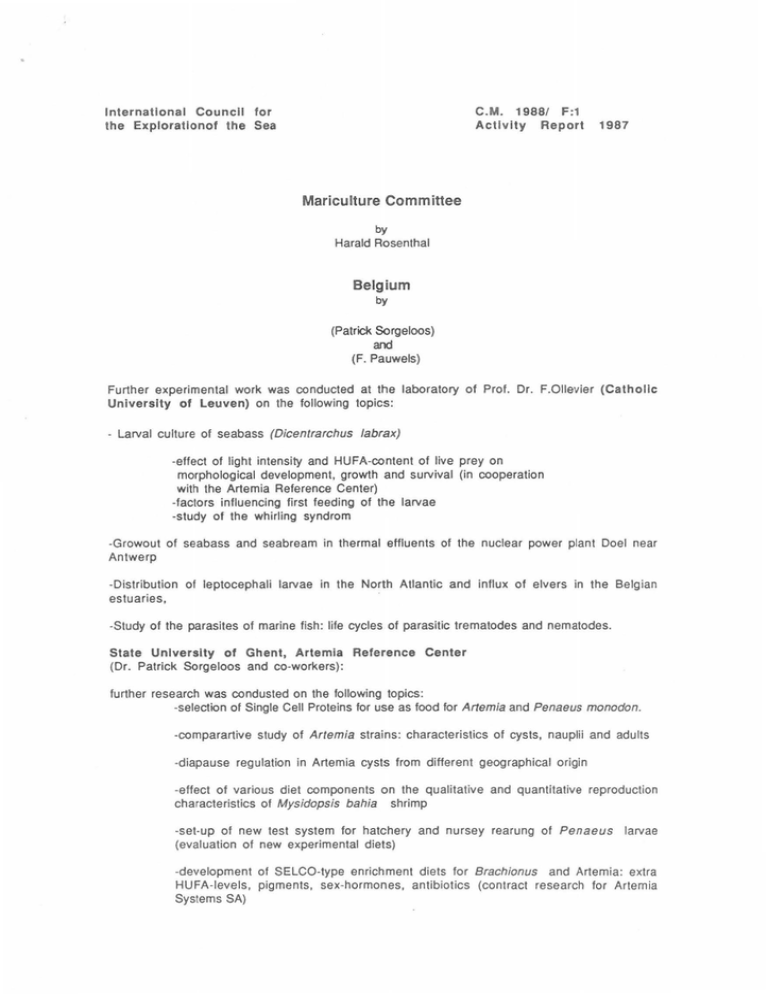
C.M. 1988/ F:1 Activity Report International Council for the Exploratlonof the Sea 1987 Mariculture Committee by Harald Rosenthal Belgium by (Patrick Sorgeloos) and (F. Pauwels) Further experimental work was conducted at the laboratory of Prof. Dr. F.Ollevier (Catholic University of Leuven) on the following topics: - Larval culture of seabass (Dicentrarchus labrax) -effect of light intensity and HUFA-content of live prey on morphological development, growth and survival (in cooperation with the Artemia Reference Center) -factors influencing first feeding of the larvae -study of the whirling syndrom -Growout of seabass and seabream in thermal effluents of the nuclear power plant Doel near Antwerp -Distribution of leptocephali larvae in the North Atlantic and influx of elvers in the Belgian estuaries, -Study of the parasites of marine fish: life cycles of parasitic trematodes and nematodes. State University of Ghent, Artemia Reference Center (Dr. Patrick Sorgeloos and co-workers): further research was condusted on the following topics: -selection of Single Cell Proteins for use as food for Artemia and Penaeus monodon. -comparartive study of Artemia strains: characteristics of cysts, nauplii and adults -diapause regulation in Artemia cysts from different geographical origin -effect of various diet components on the qualitative and quantitative reproduction characteristics of Mysidopsis bahia shrimp -set-up of new test system for hatchery and nursey rearung of Penaeus larvae (evaluation of new experimental diets) -development of SELCO-type enrichment diets for Brachionus and Artemia: extra HUFA-levels, pigments, sex-hormones, antibiotics (contract research for Artemia Systems SA) . 2. ·joint testing of larval diets developed at the Artemia Reference Center for different species of marine fish and shrimp (SEAFDEC·Philippines, ESPOL·Ecuador, Piscimeuze·Belgium, Kasetsart University·Thailandm, ect.) ·Publication of three volumes of conference proceedings "Artemia and its research applications" (2nd International Artemia Symposium, Antwerpen, Belgium September 1985) ·organisation on the 5th International Artemia Training Course (August 16· October 1, 1987)attended by 39 participants from 22 countries Canada (communicated by J. E. Stewart) Atlantlc (R. Drinnan, Halifax) Substantial growth in commercial aquaculture activity in Atlantic Canada has continued in 1987. Production of all species has increased according to projections, though a ban on marketing of blue mussels for several weeks due to a toxic incident reduced the harvest. The number of active enterprises Is still increasing rapidly suggesting that the expansion will continue for some years. Quebec (Y. Bastien) Production of Giant Scallop (Placopecten magellanicus) seed. A research programme was begun in 1987 to develop an efficient method for artificial production of Giant Scallop seed on a large scale. During the first year, a total of 80,000 spat of 1 mm in size were produced. Next year, effort will focus on hatchery production and the nursery growth of spat in 1o mm size. Mussels Preliminary work was done to estimate the carrying capacity for mussel culture of the lagoons In the Magdalen Islands. Research is also underway on the development of mussel culture In open waters using a longline technique. In 1987, PSP was reported for the first time ever in Magdalen Islands mussels. Two samples were slightly toxic (between 80 and 130 µg toxln/100 g meat) in late November, but no toxicity was found in the 200 samples taken thereafter. As Quebec mussel culture is practiced mainly in this archipelago, PSP will now have to be monitored closely to guarantee consumer's safety. Work has begun on the comparative PSP intoxication/detoxification pattern of wild and · off.bottom cultured mussels in the Bay of Gaspe. There are now nine mussel producers operating in Magdalen Islands lagoons and three in the open waters of the Baie des Chaleurs. A large increase in production is forecast in 1988 if the market recovers after the recent toxicity problem . Salmon farm The first salmon farm is now well established at St-Omer in Baie des Chaleurs. It is an integrated land Base operation composed of a 400,000 smolt hatchery and a 1oo metric ton growi ng unit. Water is pumped from three sources to give the fish the best salinity and temperature all year round (fresh water from deep wells, low salinity water from deep wells and salt water from a surface well on the beach). All stages of fish are raised in Grain silos: 3 m and 7 m (diameter) for smolt production and 10 m (diameter) for adults.
